Abstract
The ability to scale seamlessly between bioreactor sizes helps to ensure product quality and de-risk scaling activities. Bioreactor scaling translates settings from one bioreactor to another. Often, the science is complicated, and it’s challenging to communicate between different teams.
In this article, we’ll give an overview on the theory of scaling. Next, we’ll present workflows and strategies and discuss which data are needed for successful scaling. Finally, we’ll introduce a scaling tool developed by Cytiva and present several case studies using the tool.
Bioreactor scaling theory
Process development at a small scale is the essential starting point of all bioprocesses, which are then scaled up to pilot and production scales. This scale-up process is often a scientific and time-bound challenge where different bioreactors with different working volumes and potentially different sparger and agitation configurations are used. The operating parameters must be adjusted at each scale.
On the other hand, it’s pivotal to develop a process in small scale that can run with the mass transfer in the pilot or production scale bioreactor in mind. In other words, it’s equally important to establish good scale-up and scale-down models (Fig 1).

Fig 1. Illustration of scale-up and scale-down models.
How do you scale up a bioreactor?
When running a process in different bioreactors and scales, the objective is to keep the cellular environment constant across scales to achieve comparable growth, metabolism, productivity, and product quality. The cellular environment is controlled by the process parameters. These can be divided into parameters that are not scaled at all, or are easy to scale volumetrically, like temperature, overhead pressure, and nutrient addition. Most difficult to scale up or down is the dissolved oxygen (DO) control, as it’s achieved by a variety of parameters like agitation, sparger type, and gas flow rates for air and oxygen. The DO control also impacts the ability to remove CO2, which interacts with pH control. The relationship between process parameters and the cellular environment is illustrated in Figure 2.

Fig 2. Illustration of the various process parameters affecting the cellular environment.
What are the key parameters in DO control?
DO control is subject to interaction from five parameters: agitation, sparger type and size, air flow, oxygen flow, and CO2 stripping flow. These parameters span up a design space in which the process can be operated. Figure 3 illustrates the design space for DO control. Also, it highlights some boundaries for the design space and consequences for being outside the space.

Fig 3. Illustration of the design space for DO control. The left image shows the design space as a spider diagram with the operating parameters as a line. The right image shows a projection to a two-dimensional space and highlights the effects outside the design space. The operating parameters are indicated by the blue star.
What are the typical steps in bioreactor scaling?
For bioreactor scale up or scale down, the scientist or engineer must find the optimal operating parameters by understanding and evaluating the design space. In Figure 3, those parameters are indicated by the blue star. The workflow that our Cytiva team proposes sets the agitation regime in the first step (Fig 4). It can be scaled by a variety of criteria (e.g., keeping a constant tip speed, power density, mixing time, or shear regime.)
Power density (P/V) is a widely used scaling parameter and is the default in the digital Cytiva Bioreactor Scaler tool. P/V describes the energy transferred from the stirrer to the liquid and is a good proxy to account for mixing, gas dispersion, gas hold-up, and mass transfer. However, power density-based scaling doesn’t consider tank geometry, liquid movement, and fluid/gas flow patterns.
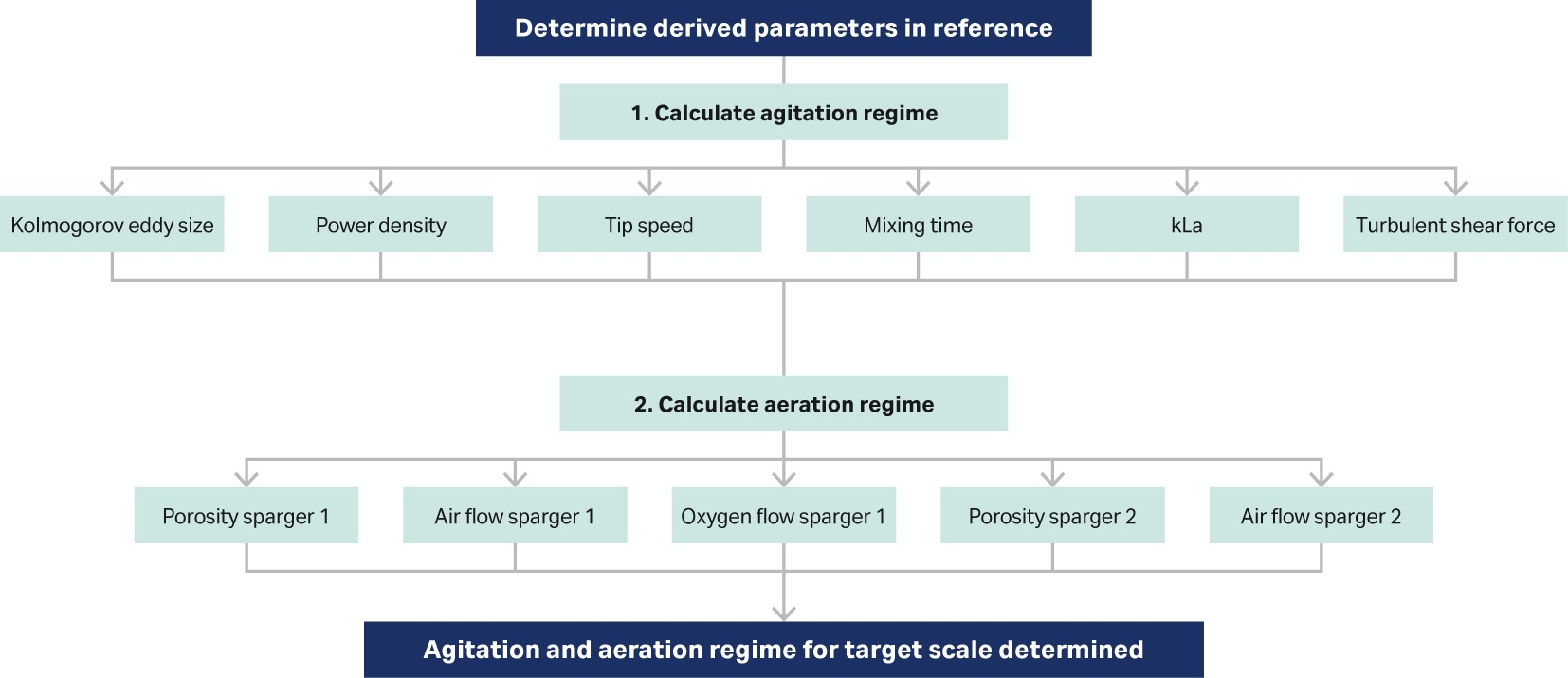
Fig 4. Proposed workflow to determine settings for agitation and aeration regimes.
In the second step, parameters for the aeration regime are determined (Fig 4). Many parameters, such as sparger configurations, gas flows, and oxygen content can be varied to supply the same oxygen transfer rate (OTR). In other words, it’s a multidimensional space that requires boundary conditions to find suitable sets of parameters.
The first boundary condition for the aeration regime is obvious: the culture must be supplied with oxygen, corresponding to the actual oxygen consumption. In other words, a certain OTR must be achieved. The second boundary condition is related to the removal of carbon dioxide, which is a critical parameter in most cell culture processes. The factors driving the mass transfer coefficient for carbon dioxide (kLaCO2) have been studied at Cytiva in addition to published literature (1). These studies found that the total volumetric gas flow was the most significant factor driving the kLaCO2. On the other hand, the impact of the agitation rate on CO2 removal was insignificant (Fig 5).
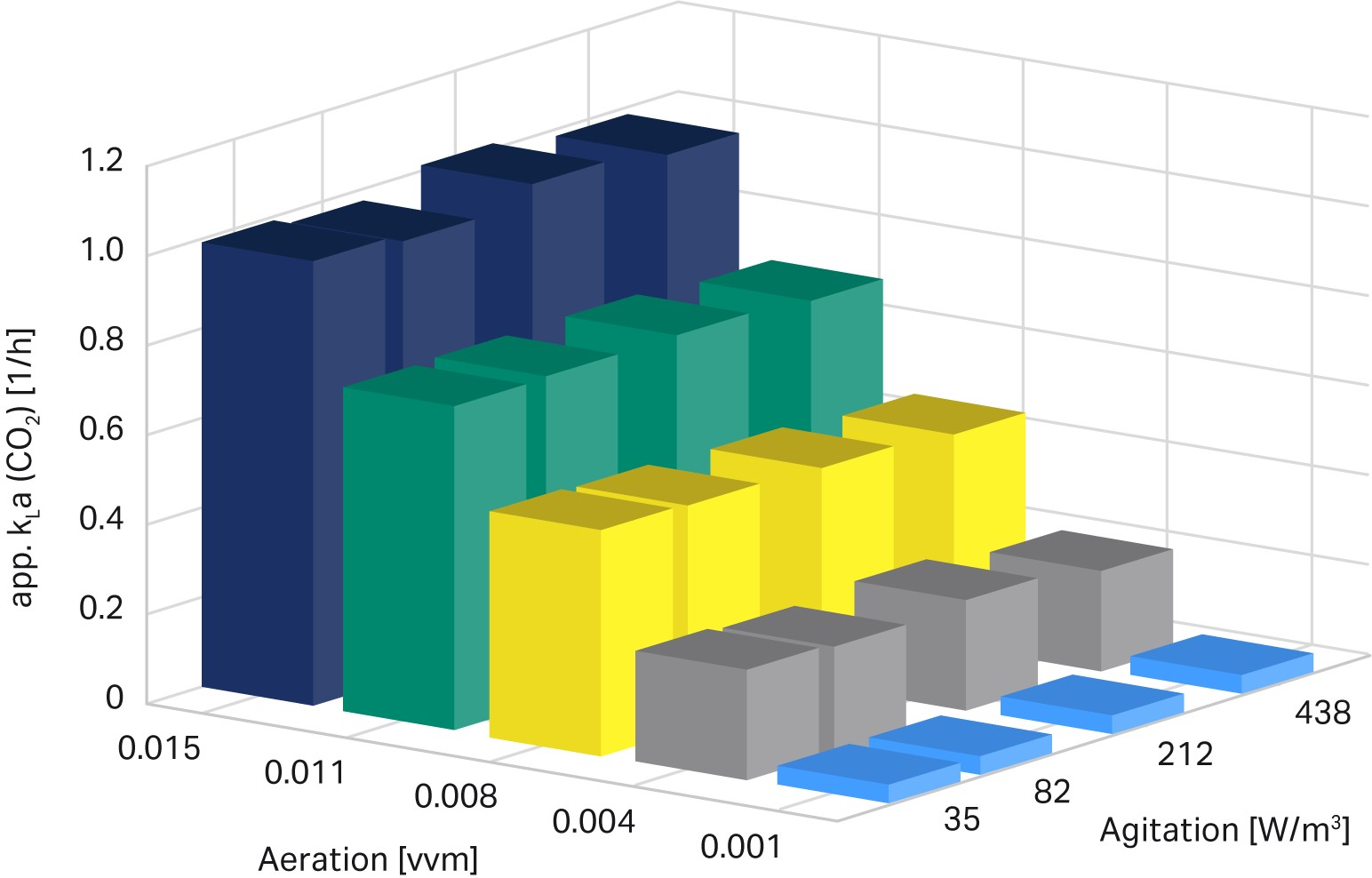
Fig 5. Apparent kLa of carbon dioxide determined in a 12 000 L reactor at Roche. Data adapted from (1).
As a result, Cytiva’s scaling strategy builds on two boundary conditions: maintaining both the required OTR and the volumetric gas flow rate (VVM) to ensure required CO2 stripping. The challenge is, however, to find appropriate settings with the existing sparger configuration of micro- and macro-spargers. The micro-sparger delivers a high OTR at low volumetric gas flow rates; the macro-sparger delivers a lower kLa at higher volumetric gas flow rates. With a two-sparger configuration, the OTR and VVM for each of the two spargers must add up to the targeted total OTR and VVM. Figure 6 illustrates how the targets for oxygen transfer and CO2 removal can be met with a combination of two spargers with different porosity.
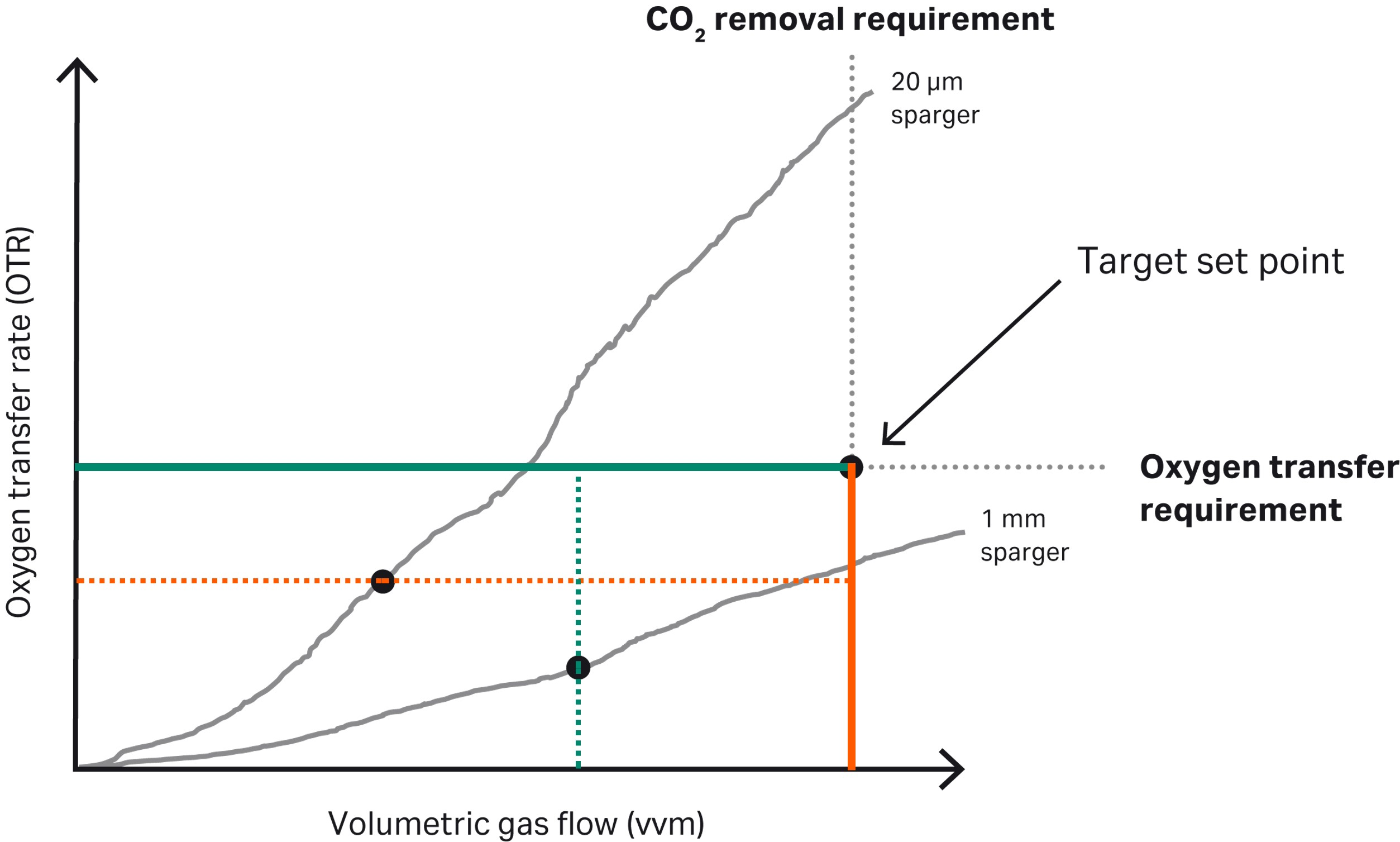
Fig 6. Illustration showing how targets for oxygen transfer and CO2 removal can be met with a combination of two spargers with different porosity and characteristics.
It’s not straightforward to predict the sparge gas rates through each sparger. This requires a thorough characterization of the sparger kLa over a wide range of gas flow rates and agitations. For Xcellerex™ XDR bioreactors characterization data for kLa, and characterization of the mixing, heat transfer, and power input are available (2–7).
A digital bioreactor scaling tool
To help ensure successful bioreactor scale up or scale down, we created a web-based tool called Cytiva Bioreactor Scaler. It uses the overall workflow described in Figure 4, the strategy described in Figure 6, and the physical characterization data for the XDR bioreactors.
The tool, which is available for Cytiva customers, is created for ease of use. Scaling is performed from one time point of the reference-scale process to the same time point in the target scale. You can provide cell line information, which will be used to set tip speed limit and maximum achievable cell density.
The tool, illustrated in Figure 7, contains only two tabs. In the first tab you’ll enter the bioreactor configuration (e.g., volume, agitation, and gas flow rates) for both the reference (i.e., current) and target scales. The tool allows you to scale to or from Cytiva’s Xcellerex™ XDR bioreactors and a selection of common benchtop options from other companies, such as the Sartorius™ ambr™ or Applikon™ 2 L glass autoclavable bioreactors. The second tab generates standard calculations for the target scale bioreactor into which your process will be scaled. You can also change the proposed settings for agitation and total gas flow rates through the micro-sparger and simulate the impact on the gassing regime and physical environment in the bioreactor. You can save all results in a report.
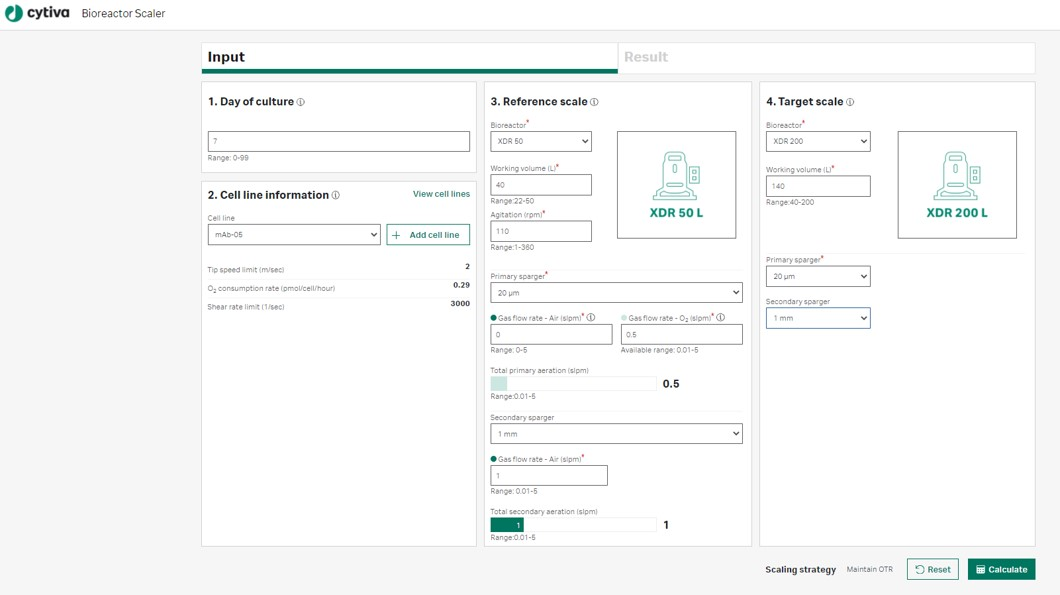
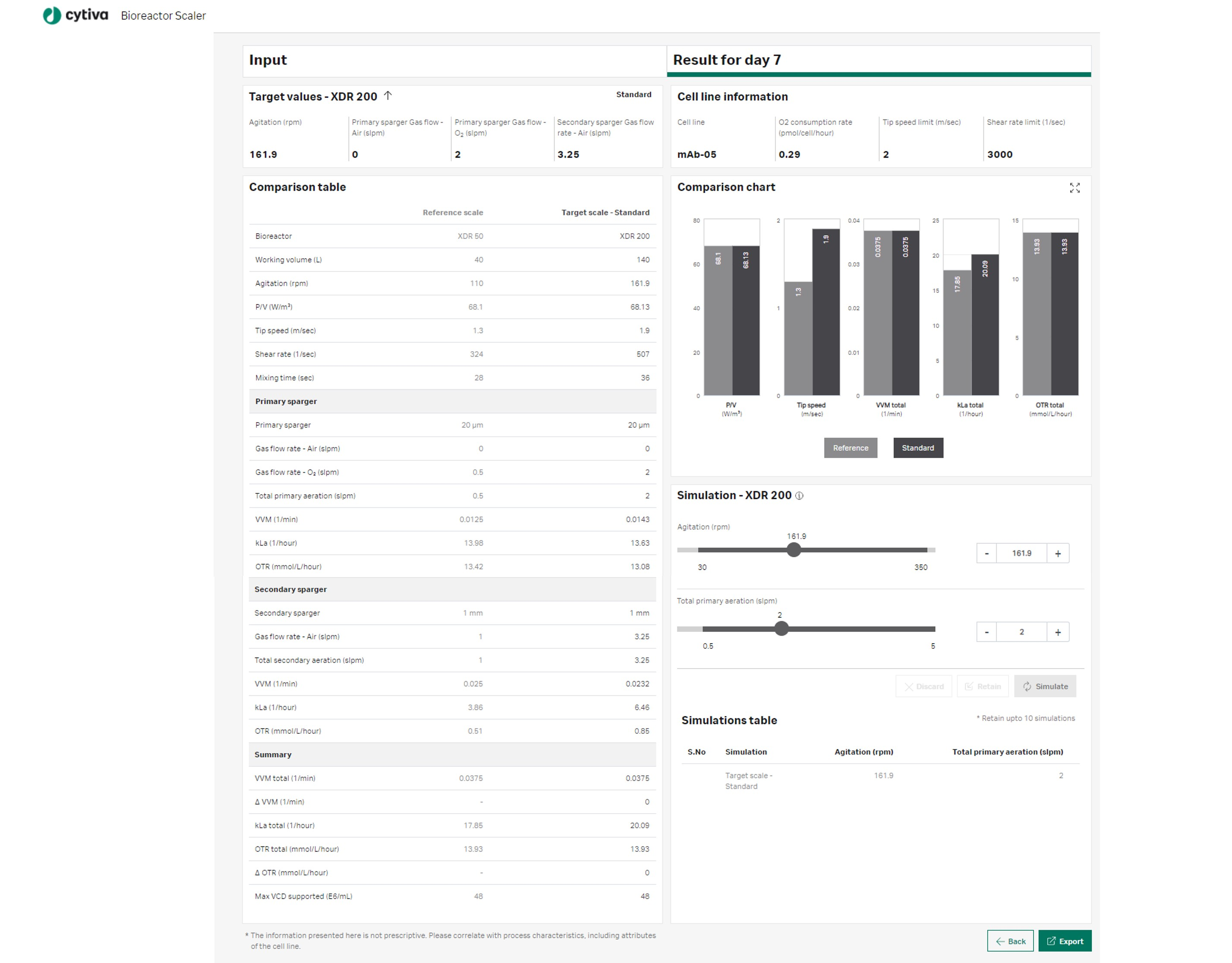
Fig 7. Illustration of the Cytiva Bioreactor Scaler tool. The left panel shows the input screen where you’ll enter the relevant operating parameters for the reference and target scales. The left panel shows the result tab with proposed operating parameters for the target scale. It also shows other calculated parameters that will help you better understand the physical environment in the bioreactor.
Case studies using the Cytiva Bioreactor Scaler v1.1
Case study 1: bioreactor scale up from XDR-50 to XDR-200
In this example, a process is run in an XDR-50 with the settings listed in Table 1. slpm is standard liters per minute.
Table 1. Process settings in XDR-50
| Primary sparger: 20 µm | Secondary sparger: 1 mm | ||||
|---|---|---|---|---|---|
| Day | Volume (L) | Agitation (rpm) | Air (slpm) | Oxygen (slpm) | Air (slpm) |
| 2 | 33 | 97 | 0.25 | 0 | 0.48 |
| 5 | 35 | 97 | 0.9 | 0 | 0.49 |
| 7 | 47 | 97 | 0.9 | 0.19 | 0.47 |
When the process is scaled up to XDR-200, the tool calculates the operating parameters. An extract of the results is shown in Table 2.
Table 2. Proposed settings for operating the process in XDR-200
| Primary sparger: 20 µm | Secondary sparger: 1 mm | |||||||||||
|---|---|---|---|---|---|---|---|---|---|---|---|---|
| Day | Volume (L) | Agitation (rpm) | P/V (W/m3) | Mixing time (s) | Air (splm) | Oxygen (splm) | kLa primary sparger (h-1) | Air (splm) |
kLa primary sparger (h-1) |
OTR (mmol/L/h) | VVM total | Estimated VCD (106 cells/mL) |
| 2 | 140 | 149 | 57 | 40 | 0.46 | 0.06 | 4.1 | 2.39 | 4.4 | 1.54 | 0.021 | 5 |
| 5 | 141 | 149 | 54 | 42 | 1.16 | 0.07 | 8.3 | 4.35 | 7.5 | 2.47 | 0.040 | 9 |
| 7 | 187 | 149 | 40 | 59 | 0.86 | 0.55 | 8.4 | 4.84 | 7 | 4.71 | 0.033 | 16 |
The results illustrate examples for parameters within the design space and can be used to increase the process understanding. They show how a constant agitation throughout the process results in a decrease in the power density and increased mixing time as the run progresses. In addition, they offer insights on how the total kLa and OTR are distributed between the two spargers and what cell density can be supported, based on the user defined cell-specific oxygen consumption rate. The results can also be used as a practical guide to compare the proposed gas flow rates with the actual mass flow controller (MFC) configuration and to set the stripping gas flow through the macro-sparger.
Case study 2: exploring the design space using the simulation function
The scaling tool can be used to explore other setpoints inside the design space and to simulate the impact on the physical environment. In this case study, we want to explore whether the process presented in case study 1 could be run with a constant power density of 57 W/m3 and with a 1 slpm cap for the micro-sparger gas flow. The results are shown in Table 3.
Table 3. Simulated settings for operating the process in XDR-200 maintaining the power density at 57 W/m3 and capping the micro-sparger gas flow at 1 slpm
| Primary sparger: 20 µm | Secondary sparger: 1 mm | |||||||||||
|---|---|---|---|---|---|---|---|---|---|---|---|---|
| Day | Volume (L) | Agitation (rpm) | P/V (W/m3) | Mixing time (s) | Air (splm) | Oxygen (splm) | kLa primary sparger (h-1) | Air (splm) |
kLa primary sparger (h-1) |
OTR (mmol/L/h) | VVM total | Estimated VCD (106cells/mL) |
| 2 | 140 | 149 | 57 | 40 | 0.46 | 0.06 | 4.1 | 2.39 | 4.4 | 1.54 | 0.021 | 5 |
| 5 | 141 | 153 | 57 | 41 | 0.92 | 0.08 | 7.1 | 4.6 | 8.1 | 2.47 | 0.040 | 9 |
| 7 | 187 | 168 | 57 | 47 | 0.55 | 0.45 | 7.1 | 5.0 | 8.7 | 4.74 | 0.032 | 16 |
The results show how the agitation speed can be increased during the process to maintain a constant power density of 57 W/m3. And they show that lower mixing times can be achieved than would be possible by maintaining a constant agitation speed throughout the process. Although the gas flow rate through the micro-sparger was capped to 1 slpm, the OTR and vvm requirement could be fulfilled. However, the air flow rate through the macro-sparger is expected to reach 5 slpm, which is the maximum in some bioreactor configurations.
Case study 3: Using the scaling tool to compare bioreactor configurations
Another application of the scaling tool is to calculate the physical parameters for a given bioreactor configuration and compare different configurations. In this case study, a perfusion process is run in an XDR-50 bioreactor in perfusion mode with the objective to maximize the OTR. The maximum gas flow rates are 5 slpm oxygen through the micro-sparger and 5 slpm air through the macro-sparger. The question is whether to use the 0.5 mm or 1 mm sparger for CO2 stripping. And we want to investigate the impact of the macro-sparger on the total OTR.
The scaling tool was used to investigate the impact of power density, working volume, and macro-sparger pore size on the total OTR and thereby the maximum achievable cell density.
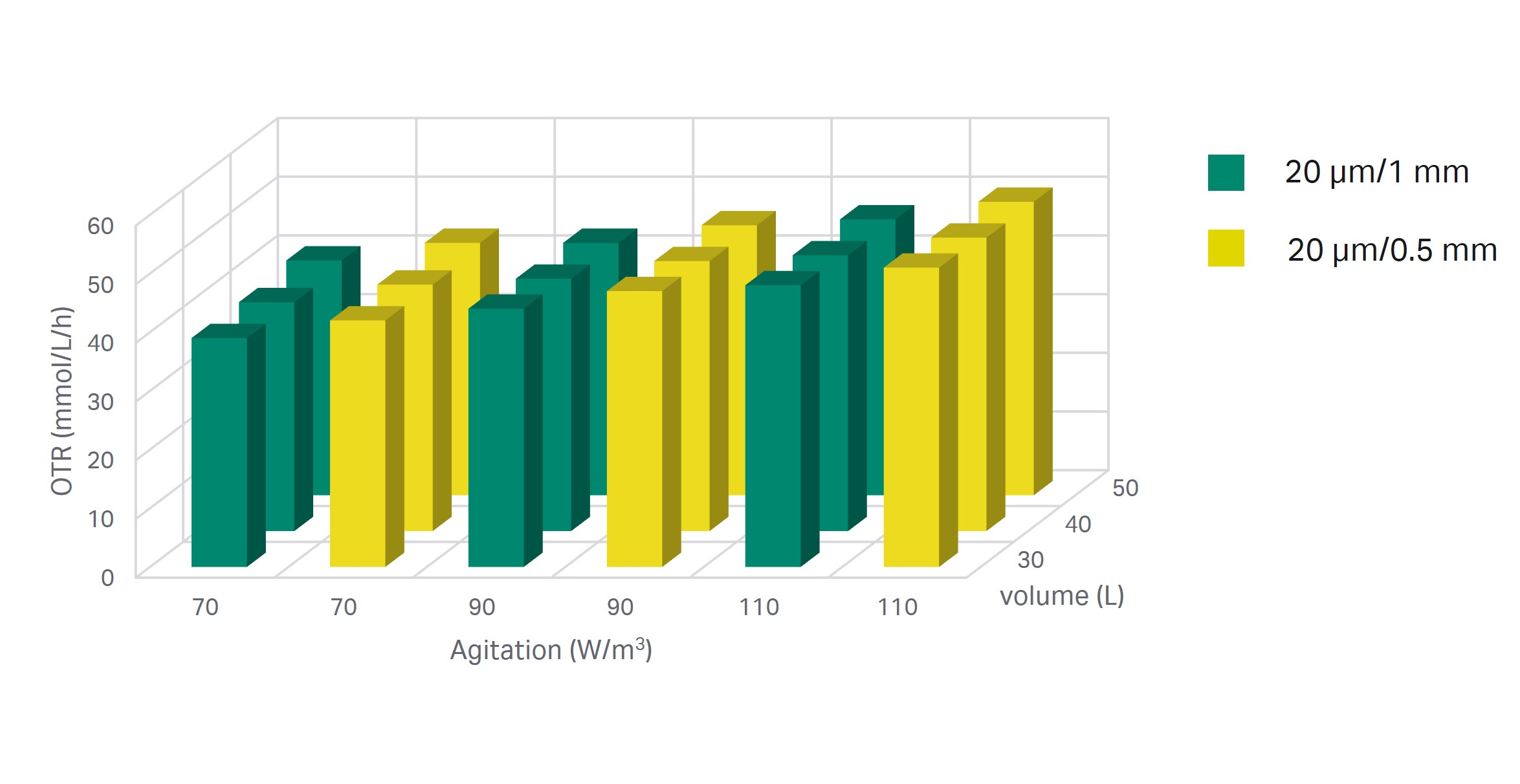
Fig 8. Impact of power density, working volume, and macro-sparger pore size on the total OTR.
Agitation was the most important factor for a high OTR. The calculations revealed that a decrease in working volume doesn’t increase OTR at constant power density. Using the 0.5 mm sparger instead of the 1 mm for CO2 stripping is expected to improve the OTR by about 7%. To achieve an OTR that exceeds 50 mmol/L/h, a power density of larger than 110 W/m3 should be applied. An OTR of 50 mmol/L/h is expected to support a cell density of 170 × 106 cells/mL based on the cell-specific oxygen consumption rate for a Cytiva developed cell line. When running the perfusion, a maximum cell density of 179 × 106 cells/mL was determined and reported elsewhere (8).
Conclusions
Scaling the physical environment in a bioreactor is a frequent task in each product development project. A well-designed scaling strategy, workflows, and easy-to-use tools will facilitate the scaling exercise. In this article we present the theory for bioreactor scaling and propose a workflow to scale the agitation and aeration regimes. And we highlight the two important boundary conditions: maintaining both the OTR and the volumetric gas flow rate when scaling a process. Furthermore, we describe a simple web-based scaling tool that eases scaling, exploring the design space for agitation and aeration and calculating key parameters that characterize the physical environment in the bioreactor.
- Sieblist C, Jenzsch M, and Pohlscheidt M. Equipment characterization to mitigate risks during transfers of cell culture manufacturing processes. Cytotechnology 68:1381–1401 (2016). DOI 10.1007/s10616-015-9899-0.
- Engineering characterization of the single-use Xcellerex™ XDR-10 stirred-tank bioreactor system, Cytiva.
- Engineering characterization of the single-use Xcellerex™ XDR-50 stirred-tank bioreactor system, Cytiva.
- Engineering characterization of the single-use Xcellerex™ XDR-200 stirred-tank bioreactor system, Cytiva.
- Engineering characterization of the single-use Xcellerex™ XDR-500 stirred-tank bioreactor system, Cytiva.
- Engineering characterization of the single-use Xcellerex™ XDR-1000 stirred-tank bioreactor system, Cytiva.
- Engineering characterization of the single-use Xcellerex™ XDR-2000 stirred-tank bioreactor system, Cytiva.
- Xcellerex™ APS intensified seed culture for a fed-batch process, Cytiva.